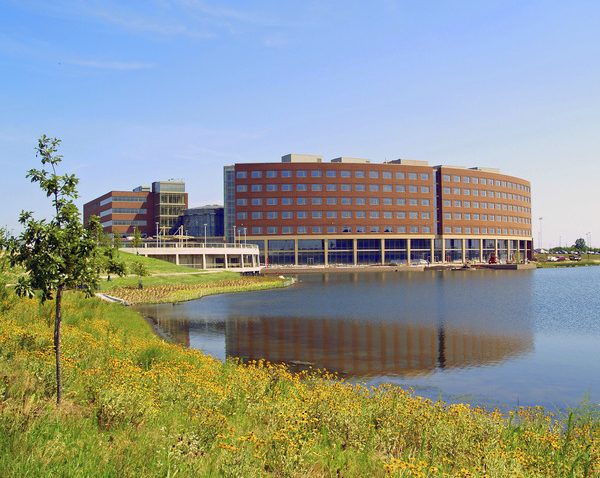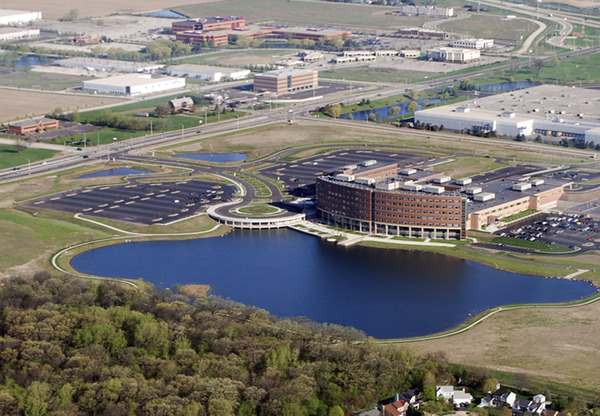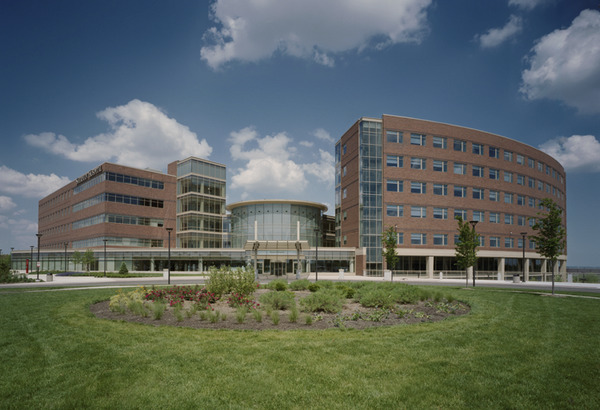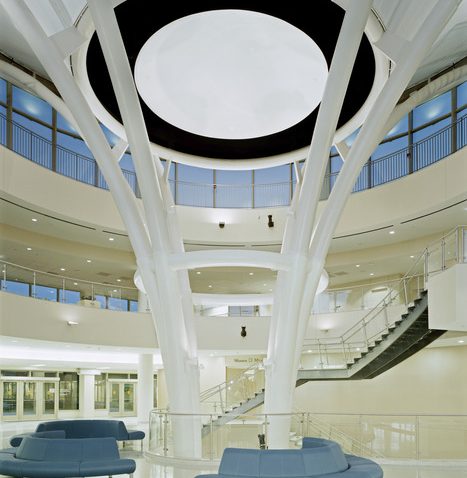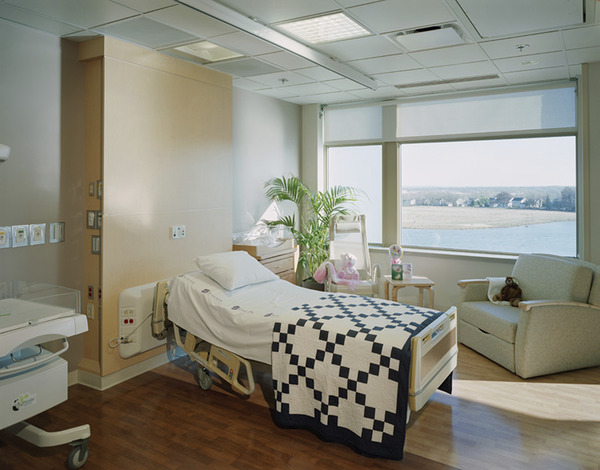Greenfield Hospital
Advocate Sherman Hospital’s greenfield hospital features the largest lake-coupled geothermal system in the world. The new, 255-bed hospital offers spectacular views across a 15-acre man-made lake that serves as the energy source for the geothermal system. It is estimated to save 30% to 40% in energy usage and upward of a million dollars a year, making it one of the most energy-efficient healthcare facilities in the world. The system qualified Advocate Sherman for a $400,000 grant from the Illinois Clean Energy Community Foundation.
The 18-foot deep lake provides 2,400 tons of cooling, with room to expand to 3,400 tons as the campus grows. Loops of piping structured in 30’x8’ pre-assembled grids are floated to the bottom of the lake. The system features 177 miles of polyethylene pipe, 175 heat exchangers and 757 water-to-air heat pumps to circulate energy throughout the facility. A manifold room is tucked beneath the main entry circle, providing an educational opportunity for visitors and staff to understand the inner workings of a geothermal system.
The use of geothermal technology provides clean, reliable, renewable, environmentally friendly energy. It offers significant operational savings and eliminates the need for noisy, unsightly cooling towers. The mechanical plant size is reduced, and shaft sizes are 10% smaller compared to conventional ducted heating and cooling systems. The geothermal system’s constant, steady supply of energy is well-suited to a hospital that is occupied 24 hours a day. The lake provides therapeutic value, connecting a healthy campus with personal health.
The hospital’s entry and lake levels meet in a dramatic, multi-story atrium framed by a unique steel structure dubbed the Tree of Life. This feature utilizes interconnected round columns curving simultaneously in two directions to dramatically cantilever 65 feet above the lobby floor. In addition to providing a warm and welcoming feel for patients, the Tree of Life supports the weight of the lobby’s smoke evacuation equipment and roof framing.
The technology design included a robust cabling and network infrastructure to support the hospital’s bandwidth requirements. The systems include universal structured cabling for distribution of voice and data, a telecommunication grounding system, distributed wireless antenna system, nurse call system, presentation audio video systems with room combining capabilities, GPS wireless clock system, card access system, infant abduction system, hospital-wide supervised paging, emergency command center and call stations, interactive patient entertainment system, fire fighter repeater system, and medical equipment integration/coordination for the specialized clinical rooms.








